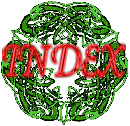What Is Shiatsu?
![]()
Shiatsu is the Japanese word meaning "Finger Pressure". Shiatsu uses hand pressure and manipulative techniques to adjust the body's physical structure and its internal energy, known in eastern cultures as "qi" or "ki."
Ki by itself is invisible, but the way ki works can be seen in the body. When a wound is healing by itself, it is the work of ki.
Traditionally everything was seen as an expression of ki. Ki is the origin, the power of life. When ki stagnates, the body becomes ill.
Meridians are channels of ki. There are twelve main meridians. Each meridian corresponds with an organ and is named after that specific organ. Meridians are not only connected to the organ, but also to the eastern concept of the function of that organ.
 Shiatsu is based on Traditional Chinese Medicine (TCM). About 2,500 years ago, in the mountains of Northern China, Taoist priests practiced Qi Gong - a meditative movement revealing and cultivating the vital life force. They believed this force, Ki (pronounced "chi" in China, "ki" in Japan), was inseparable from life itself. They discovered that Ki animated not only body and earth, but was the energetic force of the entire universe.
Shiatsu is based on Traditional Chinese Medicine (TCM). About 2,500 years ago, in the mountains of Northern China, Taoist priests practiced Qi Gong - a meditative movement revealing and cultivating the vital life force. They believed this force, Ki (pronounced "chi" in China, "ki" in Japan), was inseparable from life itself. They discovered that Ki animated not only body and earth, but was the energetic force of the entire universe.
Historians tell us these were the beginnings of TCM.
TCM is a philosophy of preserving  health, and is based
first and foremost on an understanding of the ultimate
power of Ki. In contrast to much of Western
medicine, TCM is a preventive practice, strengthening
the immune system to ward off disease.
health, and is based
first and foremost on an understanding of the ultimate
power of Ki. In contrast to much of Western
medicine, TCM is a preventive practice, strengthening
the immune system to ward off disease.
During shiatsu a unique rapport develops between the practitioner and client, because shiatsu relies on the simple but powerful experience of touch to awaken the client's own self-healing powers. This "touch communication" between practitioner and client is intrinsic to all healing methods. No needles, creams, machines, devices, or other paraphernalia are needed for the experience of a complete shiatsu session. The practitioner uses gentleness, fluidity, and rhythmical motion to work with the imbalances in the client's Ki.
Some shiatsu practitioners use a massage table; others use the floor in order to apply a wider variety of techniques. If the floor is used, the person lies on a futon, an exercise mat, or a mattress especially made for shiatsu. The practitioner then works by kneeling, sitting, crawling, and standing near the client. The client remains fully clothed for shiatsu with loose, comfortable clothing. The body and/or feet may be covered with a sheet or blanket. The room is maintained at a comfortable temperature, and soft background music can help to bring the person to a relaxed state of mind and body.
Llyr
![]()
   |